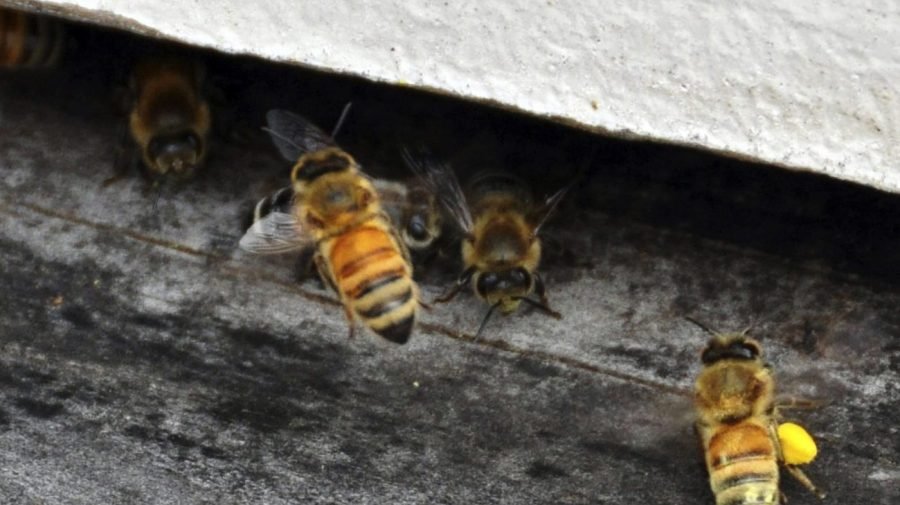
Wild honeybees in Southern California are devouring the food supplies of native pollinators — posing a potential threat to the region’s natural ecosystems, a new study has found.
These feral insects, which have greatly proliferated in Southern California, remove about 80 percent of pollen during the first day a flower opens, according to the study, published on Monday in Insect Conservation and Diversity.
But all bees in the region, along with most bee species worldwide, rely on pollen to raise their offspring, the study authors noted.
The amount of pollen consumed by honeybees from just 2.5 acres of native vegetation is enough to satiate thousands of native bees per day during peak bloom seasons, per the study.
“Although honeybees are rightly considered an indispensable asset to humans, they can also pose a serious ecological threat to natural ecosystems where they are not native,” senior author Keng-Lou James Hung, an assistant professor at the University of Oklahoma, said in a statement.
The plight of the honeybee, Hung explained, should be viewed as a matter of animal husbandry — the branch of agriculture that focuses on raising animals for production of food and other items.
“When it comes to conservation issues here in North America, honeybees are likelier to be part of the problem, not a solution or a target for conservation,” added Hung, who earned his PhD from the University of California-San Diego.
Because honeybees are bigger than most native bee species in the region, they now make up about 98 percent of all bee biomass in the Southern California ecosystem, the researchers calculated.
If the pollen and nectar fueling honeybee biomass was instead converted to native bees, those populations would be about 50 times larger than they are today, according to the study.
To draw their conclusions, the authors used pollen-removal experiments in Spring 2021 to understand the amount of pollen extracted by honeybees from three common native plants: black sage, white sage and distant phacelia, or scorpion weed.
The scientists measured honeybee visits to the flowers, flower production, pollen generation and pollen removal for the three species. They observed that just two honeybee sessions led to the removal of more than 60 percent of the available pollen in all the plants.
“Honeybees are incredibly effective at extracting resources like pollen and nectar,” lead author Dillon Travis, who also earned his PhD from UC-San Diego, said in a statement.
Unlike most native bee species in the region, honeybees can communicate the locations of food sources to other nest-mates, Travis explained. This enables them to “quickly remove most of the pollen, often early in the morning before native bees begin searching for food.”
“The relative biomass of honeybees and the pollen removal estimates both point to potentially large negative impacts of honeybees on native bee populations,” the authors warned.
Co-author Joshua Kohn, a UC-San Diego professor emeritus of ecology, also expressed his surprise at “the extraordinarily small number of individual native bees observed that were as large or larger than honeybees.”
“Particularly rare were bumble bees, which made up only 0.1 percent of all bees we observed,” he said in a statement.
While recognizing that bees in general are under threat of habitat loss, the effects of climate change and environmental contamination, the researchers pointed to this extreme level of honeybee pollen exploitation as another potential danger.
“Public concern for honeybees often fails to consider their potential negative effects on native pollinators,” the authors concluded.






